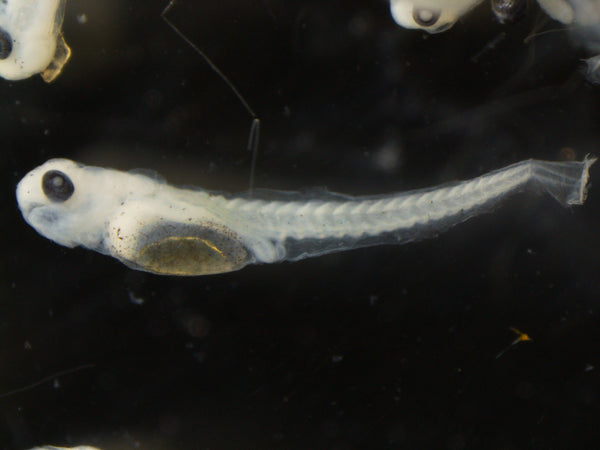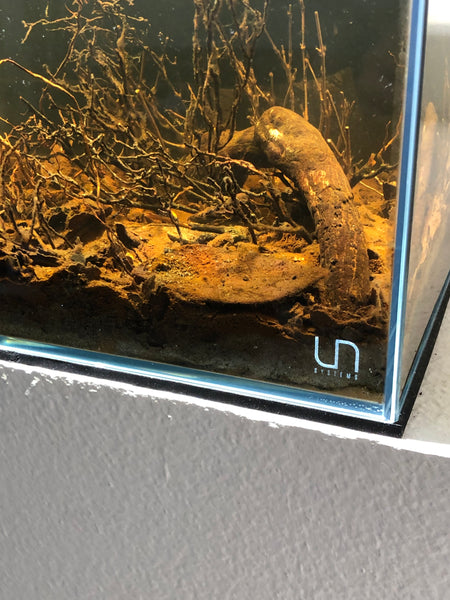- Continue Shopping
- Your Cart is Empty
It's about the microbiome...
As we've all started to figure out by now, our botanical-influenced aquariums are a lot more of a little slice of Nature that you're recreating in your home then they are just a "pet-holding container."

The botanical-style aquarium is a microcosm which depends upon botanical materials to impact the environment.

This microcosm consists of a myriad of life format all levels and all sizes, ranging from our fishes, to small crustaceans, worms, and countless microorganisms. These little guys, the bacteria and Paramecium and the like, comprise what is known as the "microbiome" of our aquariums.

A "microbiome", by definition, is defined as "...a community of microorganisms (such as bacteria, fungi, and viruses) that inhabit a particular environment." (according to Merriam-Webster)

Now, sure, every aquarium has a microbiome to a certain extent:
We have the beneficial bacteria which facilitate the nitrogen cycle, and play an indespensible role in the function of our little worlds. The botanical-style aquarium is no different; in fact, this is where I start wondering...It's the place where my basic high school and college elective-course biology falls away, and you get into more complex aspects of aquatic ecology in aquariums.
Yet, it's important to at least understand this concept as it can relate to aquariums. It's worth doing a bit of research and pondering. It'll educate you, challenge you, and make you a better overall aquarist. In this little blog, we can't possibly cover every aspect of this- but we can touch on a few broad points that are really fascinating and impactful.
So much of this proces-and our understanding starts with...botanicals.
With botanicals breaking down in the aquarium as a result of the growth of fungi and microorganisms, I can't help but wonder if they perform, to some extent, a role in the management-or enhancement-of the nitrogen cycle.
Yeah, you understand the nitrogen cycle, right?

How do botanicals impact this process? Or, more specifically, the microorganisms that they serve?
In other words, does having a bunch of leaves and other botanical materials in the aquarium foster a larger population of these valuable organisms, capable of processing organics- thus creating a more stable, robust biological filtration capacity in the aquarium?

I believe that they do.
With a matrix of materials present, do the bacteria (and their biofilms- as we've discussed a number of times here) have not only a "substrate" upon which to attach and colonize, but an "on board" food source which they can utilize as needed?
Facultative bacteria, adaptable organisms which can use either dissolved oxygen or oxygen obtained from food materials such as sulfate or nitrate ions, would also be capable of switching to fermentationor anaerobic respiration if oxygen is absent.
Hmm...fermentation.
Well, that's likely another topic for another time. Let's focus on some of the other more "practical" aspects of this "biome" thing.
Like...food production for our fishes.
In the case of our fave aquatic habitats, like streams, ponds, and inundated forests, epiphytes, like biofilms and fungal mats are abundant, and many fishes will spend large amounts of time foraging the "biocover" on tree trunks, branches, leaves, and other botanical materials.

The biocover consists of stuff like algae, biofilms, and fungi. It provides sustenance for a large number of fishes all types.
And of course, what happens in Nature also happens the aquarium- if we allow it to, right? And it can function in much the same way?

Yeah.
I am of the opinion that a botanical-style aquarium, complete with its decomposing leaves and seed pods, can serve as a sort of "buffet" for many fishes- even those who's primary food sources are known to be things like insects and worms and such. Detritus and the microorganisms within it can provide an excellent supplemental food source for our fishes!
Sustenence...from the microbiome.
It's well known that in many habitats, like inundated forests, etc., fishes will adjust their feeding strategies to utilize the available food sources at different times of the year, such as the "dry season", etc.

And it's also known that many fish fry feed actively on bacteria and fungi in these habitats...So I suggest once again that a botanical-style aquarium could be an excellent sort of "nursery" for many fish and shrimp species!

Again, it's that idea about the "functional aesthetics" of the, botanical-style aquariums. The idea which acknowledges the fact that the botanicals we use not only look cool, but they provide an important function (supplemental food production) as well. As we repeat constantly, the "look" is a collateral benefit of the function.
This is a profoundly important idea.

Perhaps arcane to some- but certainly not insignificant.
And of course, we've talked before about this "botanical nursery" concept- creating an aquarium for fish fry that has a large quantity of decomposing botanicals and leaves to foster the production of these materials, which serve as supplemental food for your fish fry. I have done this before myself and can attest to its viability. You fishes will have a constant supply of "natural" foods to supplement what you are feeding them in the early phases of their life.
Learn to make peace with your detritus! As always, look to the wild aquatic habitats of the world for an example of how this food source functions within the greater biome.

I'm fascinated by the "mental adjustments" that we need to make to accept the aesthetic and the processes of natural decay, fungal growth, the appearance of biofilms, and how these affect what's occurring in the aquarium. It's all a complex synergy of life and aesthetic.
And, in order to make the mental shifts which make this all work, we we have to accept Nature's input here.
Understand that, when we create a botanical-filled aquarium, not only do we have the opportunity to create an aquarium which differs significantly from those in years past- we have a unique window into the natural world and the role of these materials in the wild.

One thing that's very unique about the botanical-style approach is that we tend to accept the idea of decomposing materials accumulating in our systems. We understand that they act, to a certain extent, as "fuel" for the micro and macrofauna which reside in the aquarium, and that they perform this function as long as they are present in the system.

A profound mental shift...
And it's all about the microbiome. today's simple idea with enormous impact!
Stay curious. Stay thoughtful. Stay observant. Stay diligent...
And Stay Wet.
Scott Fellman
Tannin Aquatics







Scott Fellman
Author